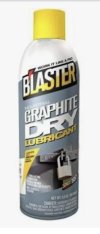ObiWanKannoli
Well-Known Member
From what I read, this may be a better option for colloidal graphite:
 www.newmantools.com
www.newmantools.com
The particle size is much finer than what is generally found in the auto parts store leading to better 'filling of any pores in the barrel (particles are small enough to fit) and a more flat, uniform finish.
May not matter at all but I figured I'd add to the content here.
Neolube No.1, LUBRICANT - COLLOIDAL GRAPHITE IN ISOPROPANOL, MIL-L-24131C, manufactured by Huron Industries Inc. - Newman Tools
Neolube No. 1 is a dry film, conductive lubricant, used extensively at nuclear power generating plants and other nuclear facilities as an anti-seize compound, thread lubricant and for lubricating moving parts and rubbing surfaces.
The particle size is much finer than what is generally found in the auto parts store leading to better 'filling of any pores in the barrel (particles are small enough to fit) and a more flat, uniform finish.
May not matter at all but I figured I'd add to the content here.


